Extending Home Networks - A Comparison of G.hn, HomePlug AV2 and Wi-Fi Mesh
by Ganesh T S on December 7, 2016 8:00 AM ESTPLC Performance: ARRIS SBX-1000P (G.hn) vs. D-Link DHP-P701AV (HomePlug AV2)
The ARRIS SBX-1000P is a wired network extender based on G.hn technology. It is meant to be used in conjunction with a RipCurrent router such as the SBR-AC1900P. The aspect that differentiates the SBR-AC1900P from other AC1900 routers is the integration of a G.hn PLC chipset inside the router itself. Otherwise the design is a standard Broadcom-based AC1900 router (Broadcom BCM4709A as the SoC and the Broadcom BCM4360 for the 3x3:3 an+ac / bgn 5 GHz and 2.4 GHz radios). The G.hn PLC chipset is from Marvell - the 88LX3142 for the digital baseband and the 88LX2718 for the analog front end.
The SBX-1000P is a simple PLC node with a single Ethernet port. It uses the same Marvell platform as the G.hn segment of the SBR-AC1900P. Similar to the Comtrend PG-9172 that we reviewed earlier, it comes with MIMO support and G.hn / HPAV co-existence technology.
The D-Link DHP-P701AV is an AV2 2000-class HomePlug AV2-compliant PLC kit. It uses the Broadcom BCM60500 chipset. It earns the AV2 2000 designation, thanks to its MIMO capabilities and the use of the full possible spectrum allowed by HomePlug AV2 - 2 to 86 MHz.
Note that this kit is meant to be used in conjunction with a regular router. There are products such as the Nighthawk DST in the market that combine the router and PLC chipset in a single unit (like the ARRIS kit we just discussed above). However, the Nighthawk DST uses a cheaper SISO version of the Broadcom chipset that is only AV750-class.
In any case, we are going to compared wired backhaul over power lines using the best possible products that G.hn and HomePlug AV2 currently have in the market. The graphs below shows the TCP and UDP downlink and uplink speeds across the six different locations in our test setup.
In almost all cases (except for a few UDP ones), the HomePlug AV2 2000-class D-Link DHP-P701AV delivers better throughput. This is in contrast to the previous review of the Comtrend PG-9172, where the G.hn kit could hold its own against the AV2 1200 products. The upcoming generation of G.hn chipsets promises better performance - it remains to be seen if that makes G.hn achieve performance parity with HomePlug AV2 in our particular test setup.


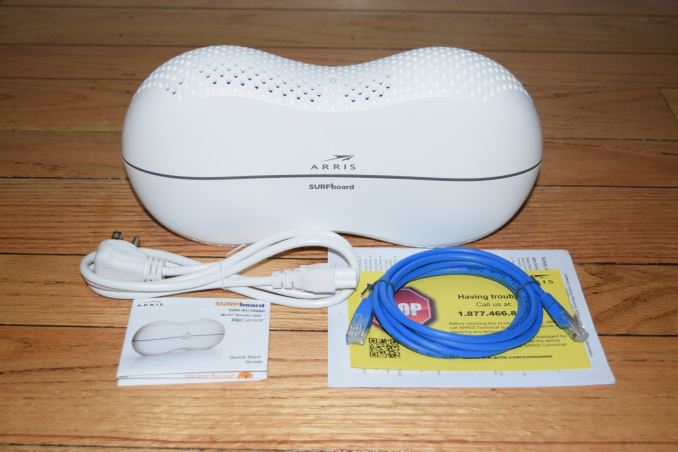

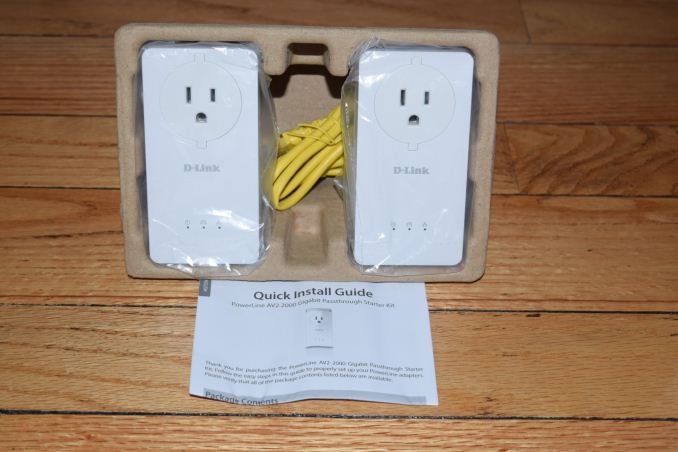
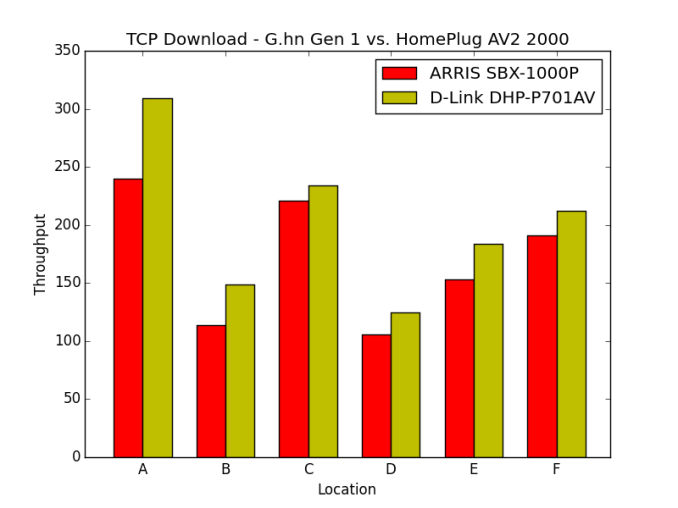
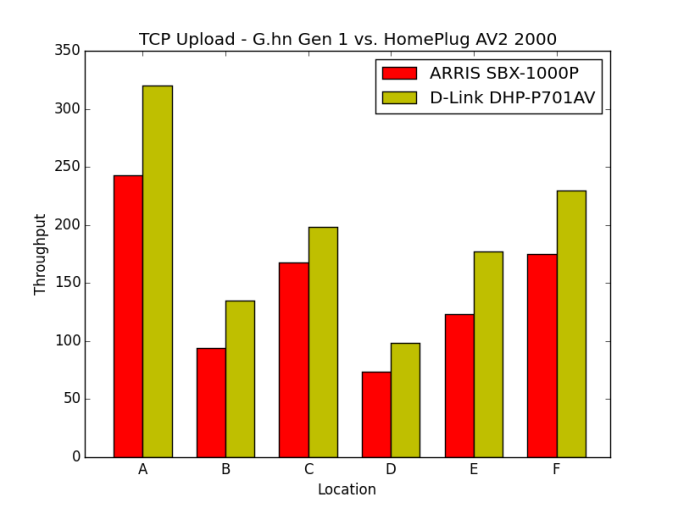
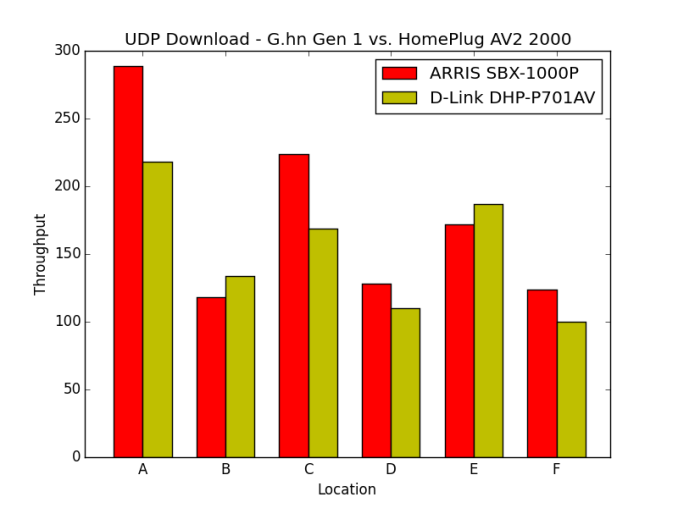
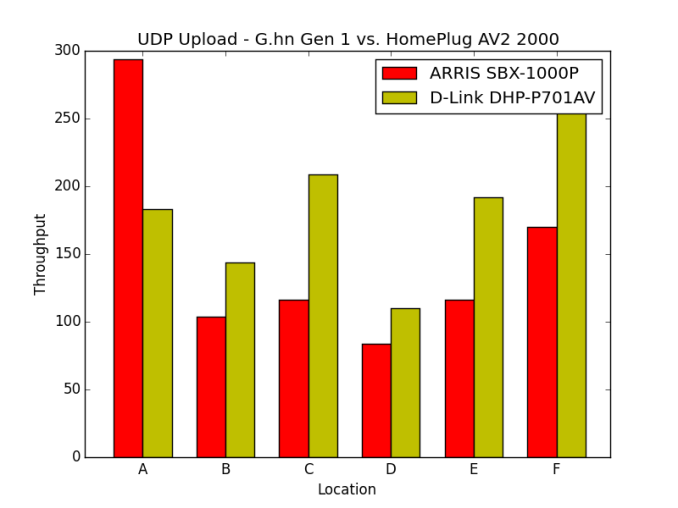








56 Comments
View All Comments
name99 - Thursday, December 8, 2016 - link
Unfortunately what's missing is the all-important "how long can the damn hardware run before it needs to be rebooted?"My experience has been that the Apple base station has been pretty much unrivaled in this respect -- it just keeps working.
Every other WiFi base station I've ever had to deal with (certainly all the various crappy ones that ISPs give people, along with some common standalone brands like DLink) seems incapable of staying up more than two weeks or so without requiring a reboot. As far as I can tell, the issue is not in the WiFi per se, but in resources leaks in the router part of the device --- something like "each new NAT connection leaks something (bytes?)" and eventually you run out and have to reboot.
Obviously testing for this sort of bug takes time, but given automated tools, it seems like the sort of thing that's totally feasible --- a robot station that simply loops requesting new DHCP requests then some number of different NAT connections --- and we see if that can last indefinitely. Hopefully being pounded with new NAT and DHCP requests every few seconds will shake loose these sorts of resource leakage problems.
And this stuff is IMPORTANT. I'd much rather buy the system whose software was written by someone who knows what they are doing than the system that has 20% higher performance but which randomly stops working under god know what conditions.
Meteor2 - Tuesday, December 13, 2016 - link
Yep, my AirPort Extreme only gets a restart when I upgrade the firmware, which I've done... once in two years. Super-solid and great performance. It sits high on a shelf near the physical centre of my (3-story brick and concrete) house. Nowhere is my LAN speed lower than my broadband (which is admittedly a little 'slow' at 50 Mbps).digitalgriffin - Tuesday, December 27, 2016 - link
This isn't the best of test. There are a number of variables here which could affect the overall outcome.1. This is a fairly small home on 1 level. Try a larger home, or 3+ story townhome in a congested neighborhood where your neighbors have numerous 5GHz networks.
2. Is there a reasonable signal spot between the router and the wifi mesh repeater?
3. What about lag introduced each time the signal "hops" on a wifi repeater station?
I looked at my options. I had a dead spot between the router and my bedroom just 80 feet away. To get it to repeat reliably using wifi I would have had to use 3 line of sights to get it around the corner into the hall way then up the stairs to the outside of the bedroom.
Option 2 is just plug in a PLN adapter and attach a access point where I wanted. It was actually cheaper in the end and a lot more reliable.
300 Mbps is a lot more than anyone would reasonably need unless they desperately needed that bandwidth for 1 Gbps fiber optic that few of us have to download "Movie preview" torrent files faster. A lot of game servers cap your download limit. So I call shenanigans if you think you need more. And your reflexes aren't going to be faster than even the slowest of broadband connections. Sorry.
mannyvel - Thursday, December 29, 2016 - link
So when you tested you ran X parallel streams from one location at a time? If so, that's generally a poor indicator of actual WiFi performance; according to our WiFi guys router manufacturers will "cheat" and optimize for a one-client case.Instead, why not try doing multiple clients with different PHY rates using multiple streams, which is what happens in the Real World. Your case is basically one person doing something from N locations, which is a test but not a very useful one.
Also, the house is really small. Does extending the network even make sense in this scenario? Why not just have a good router in the middle of the house? Did you baseline the performance of a non-extended wifi setup? Or is the setup just a straw man?
greg_mitch - Monday, January 2, 2017 - link
Just upgraded from the Netgear R7000 to the Orbi in a 3500+, 2-story w/basement house. The difference has been staggering.Basement - Before/After - http://i.imgur.com/kaypSio.jpg
2nd Floor Bedroom - http://i.imgur.com/7tKagF2.jpg
Main Floor Office - http://i.imgur.com/ndMcCR8.jpg
I don't think I will need to add an additional satellite. I have the router on the 2nd floor and the included satellite in the basement. Would recommend to anyone to go with the Orbi solution.
MrZipf - Tuesday, January 7, 2020 - link
This is a great article.It's taken a long time for g.hn adapters to surface in the UK, but now they're here they sell for a nearly 100% price premium over HomePlug AV2 2000. I took some measurements to consider whether they're worth the premium:
https://wordpress.com/post/specklepattern.wordpres...